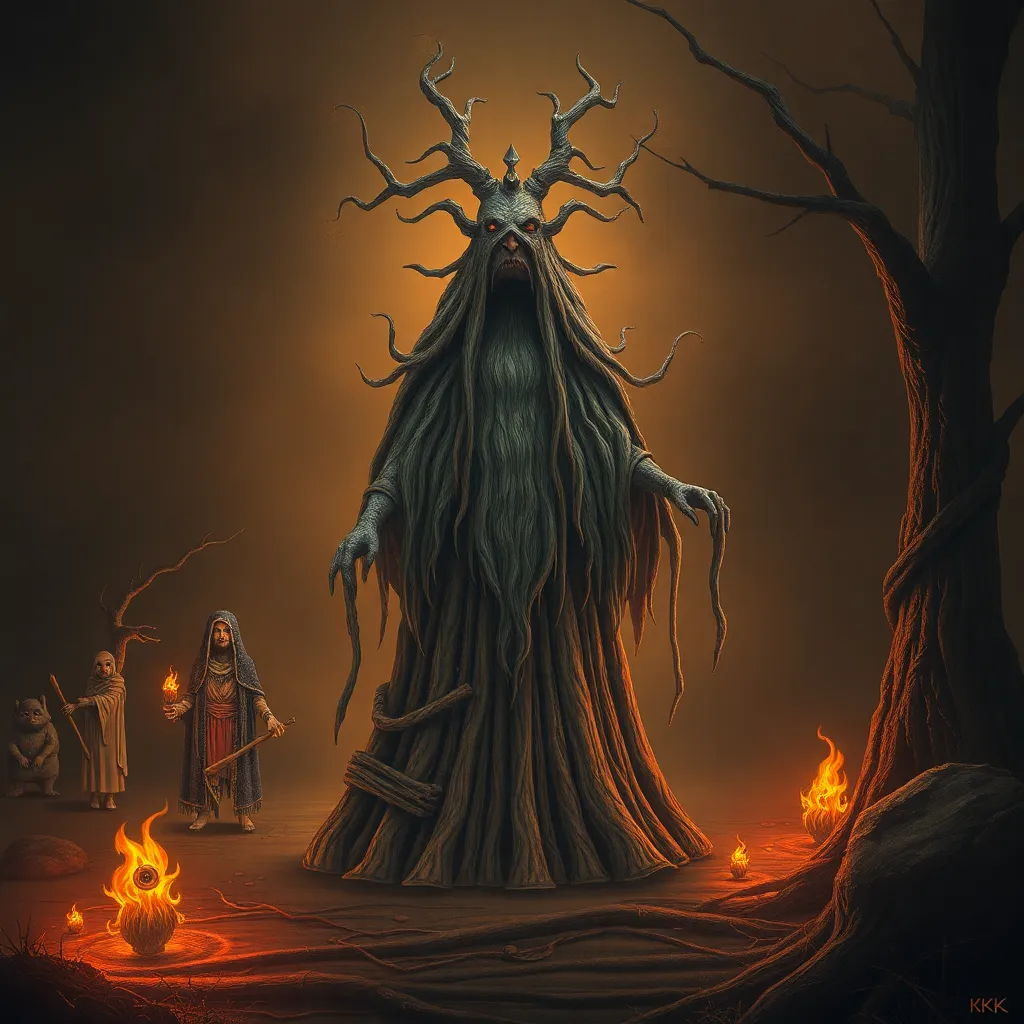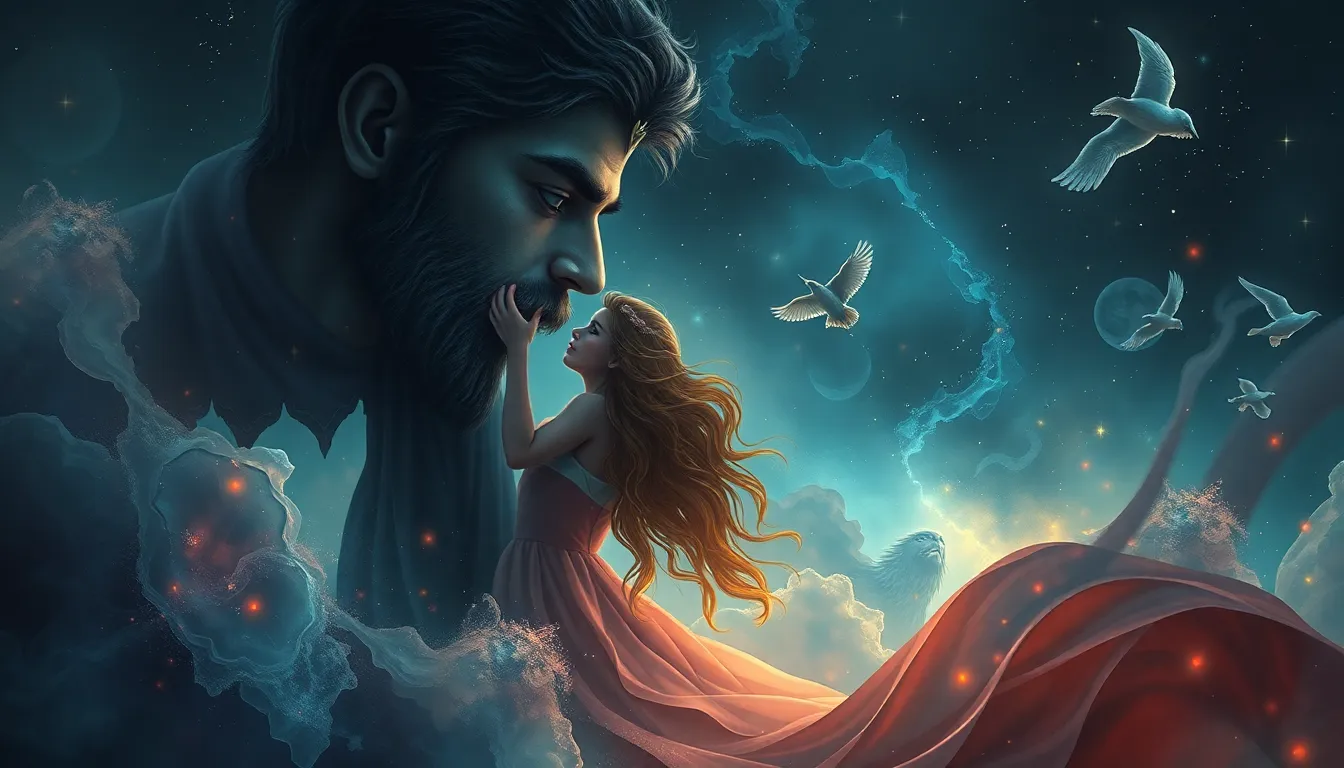Baba Yaga: The Hag’s Relationship with Other Mythical Creatures
I. Introduction
Baba Yaga is a prominent figure in Slavic folklore, often depicted as a fearsome old woman with a penchant for magic and mischief. Her character is multifaceted, oscillating between benevolent and malevolent, and she has become an archetype in various narratives across Eastern Europe. Understanding Baba Yaga’s interactions with other mythical beings is crucial for grasping the complexities of Slavic mythology, as these relationships reveal deeper meanings and themes within the tales.
This article aims to explore Baba Yaga’s relationships with various mythical creatures, shedding light on her role in the larger tapestry of folklore. We will delve into her origins, her interactions with forest spirits, other witches, elemental beings, and heroes, and the implications of these relationships on nature and morality.
II. The Origins of Baba Yaga
The origins of Baba Yaga can be traced back to ancient Slavic beliefs and practices. She has been a part of folklore for centuries, with her stories evolving over time. Historically, Baba Yaga is associated with the wild, untamed aspects of nature, embodying both the nurturing and destructive forces of the earth.
Common traits of Baba Yaga include her ambiguous morality, her connection to the forest, and her mastery of herbalism and magic. She is often described as living in a hut that stands on chicken legs, allowing it to move around, symbolizing her elusive and unpredictable nature. Over the years, Baba Yaga has been portrayed in various ways: sometimes as a wise woman, other times as a terrifying witch, reflecting the duality of her character.
III. Baba Yaga and the Forest Spirits
In Slavic mythology, forest spirits are integral to the natural world, often representing different aspects of nature, such as trees, rivers, and animals. Baba Yaga’s relationship with these spirits is complex; she can be seen as both a guardian of the forest and an adversary to those who disrespect it.
For instance, in some tales, Baba Yaga assists lost travelers who show respect for the forest, guiding them back to safety. However, she can also punish those who harm nature, showcasing her role as a protector. Specific stories illustrate these dynamics:
- The Tale of the Lost Traveler: A hunter who respects the forest meets Baba Yaga, who aids him in his quest.
- The Tale of the Despoilers: A group of woodcutters who offend the spirits of the forest face Baba Yaga’s wrath, leading to their demise.
IV. Interactions with Other Witches and Magical Women
The archetype of witches in folklore encompasses a wide range of characters, from benevolent healers to malevolent hags. Baba Yaga often interacts with other female magical figures in these tales, sometimes collaborating and other times clashing.
Baba Yaga’s relationships with other witches highlight themes of rivalry and alliance. For example, she may collaborate with a witch to defeat a common enemy or engage in a battle of wits and magic against another formidable opponent. Notable examples include:
- Baba Yaga vs. The Young Witch: In a tale where a young witch seeks to prove herself, she challenges Baba Yaga, leading to a series of magical duels.
- Alliance with the Herbalist: In another story, Baba Yaga teams up with a healer to ward off a plague affecting their village.
V. The Hag and the Elemental Beings
Elemental beings represent the fundamental forces of nature: fire, water, earth, and air. These entities play a significant role in Slavic mythology, and Baba Yaga’s interactions with them reveal deeper symbolic meanings.
She is often depicted as having control over these elements, reflecting her power and connection to nature. For example:
- Fire: Baba Yaga uses fire for both destruction and creation, symbolizing transformation.
- Water: In some tales, she can summon rain or storms, illustrating her mastery over the natural world.
- Earth: Her hut on chicken legs represents her deep connection to the earth and its mysteries.
- Air: Baba Yaga is sometimes depicted riding through the skies, showcasing her freedom and power.
VI. Baba Yaga and the Hero Archetype
In Slavic tales, the hero archetype often embodies bravery, resilience, and a quest for knowledge or fulfillment. Baba Yaga frequently plays the role of a mentor, obstacle, or guide in these narratives, offering challenges that heroes must overcome to grow.
Common themes of heroism in these stories include:
- Facing fear and danger
- Seeking wisdom and guidance
- Learning moral lessons through trials
Notable stories showcasing her relationship with heroes include:
- The Hero’s Journey: A young hero seeks Baba Yaga’s help to defeat a formidable foe, learning valuable lessons along the way.
- The Test of Wits: A clever hero outsmarts Baba Yaga to obtain a magical item, showcasing intelligence over brute strength.
VII. Consequences of Baba Yaga’s Interactions
Baba Yaga’s interactions with other mythical beings have significant implications for the balance of nature and the mythical realm. Her relationships often reflect the delicate interplay between good and evil, life and death, and creation and destruction.
The moral lessons derived from her relationships are profound, often revolving around respect for nature, the consequences of one’s actions, and the duality of existence. These themes resonate in modern interpretations of her character, where she is seen as a symbol of empowerment and wisdom.
VIII. Conclusion
In summary, Baba Yaga’s complex relationships with other mythical beings provide a rich understanding of Slavic folklore. Her interactions reveal the intricate balance of nature, the moral lessons embedded in tales, and the enduring legacy of her character in contemporary culture.
As we continue to explore these themes, it is evident that Baba Yaga remains a significant figure in literature and popular culture, embodying the complexities of the human experience and the mysteries of the natural world.



